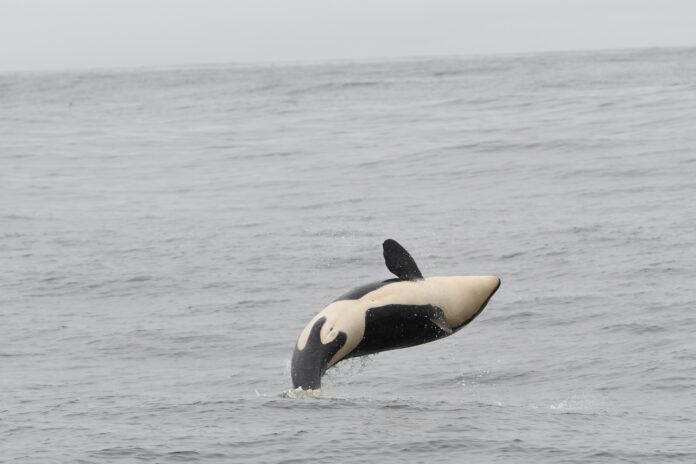It appears last year was a record-setting one for more than just humpback whales in the Salish Sea, with a record number of Bigg’s killer whales spotted.
According to the Pacific Whale Watch Association, Bigg’s killer whales were seen on 278 days last year and their population has been steadily increasing over the last 10 years.
The association adds there were 1,221 unique sightings of Bigg’s killer whales throughout the Salish Sea last year, according to the Orca Behaviour Institute. A unique sighting means a specific group of whales were seen on a single day and it does not include repeat sightings of the same whales on the same day.
The number is 154 more sightings than in 2021 and double the recorded sightings of Bigg’s killer whales in 2017.
A single-day record was recorded by the association last year with more than 70 Bigg’s killer whales spread in areas from Hood Canal in Washington to Campbell River.
They add populations of Bigg’s killer whale, formerly known as “transient” whales, are continuing to grow and have prompted more research as their presence increases.
“When Bigg’s were first studied in the Salish Sea, it was just after the implementation of the Marine Mammal Protection Act,” said Orca Behaviour Institute director Monika Wieland Shields.
“In the decades since, seals, sea lions, and porpoises have all recovered in spectacular fashion. The Salish Sea can now support many more killer whales than it used to and clearly, word has spread.”
Other species are continuing to grow in the area, with humpback whales in a “humpback comeback” after 396 individuals were photographed in the Salish Sea last year. Gray whales were reported on 200 days and minke whales were seen on 158 days last year as well.
The association is also marking a different milestone from 2022, with more than 1,000 protective actions made. They include 740 vessel-related changes, affecting 74 per cent of interactions.
They also removed more than 300 pieces of marine debris and reported 20 injured or entangled whales and sea lions to local rescue teams.






